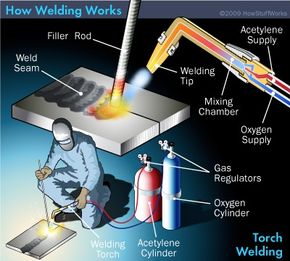Achieving Welding Quality: Introducing the Keys of WPS Implementation and Optimization
In the world of welding, achieving excellence is a search that hinges on the precise execution and optimization of Welding Procedure Specs (WPS) These foundational papers function as the backbone of welding procedures, determining the treatments and parameters needed for producing top quality welds continually. However, the secrets to opening the complete possibility of WPS lie not just in recognizing its importance however also in mastering the details of its execution and optimization. By diving right into the essential aspects, methods, difficulties, and ideal methods connected with WPS, a world of welding quality awaits those who are eager to explore its midsts.
Value of WPS in Welding
The Relevance of Welding Procedure Specifications (WPS) in the welding market can not be overstated, acting as the foundation for making sure uniformity, quality, and safety and security in welding procedures. A WPS gives thorough directions on just how welding is to be performed, including crucial variables such as materials, welding procedures, joint design, filler steels, preheat and interpass temperatures, welding currents, voltages, traveling speeds, and a lot more. By adhering to a distinct WPS, welders can maintain harmony in their work, leading to constant weld high quality across different tasks.

Crucial Element of WPS
Talking about the essential components of a welding procedure requirements (WPS) is essential for recognizing its duty in welding procedures. One important facet of a WPS is the welding procedure spec, which details the particular welding processes to be made use of, such as gas tungsten arc welding (GTAW) or secured steel arc welding (SMAW) By integrating these essential elements right into the WPS, welding treatments can be standardized, ensuring quality, effectiveness, and safety in welding procedures.
Strategies for WPS Optimization

Second of all, training and qualification of welding workers according to the details needs of the WPS is paramount. Offering thorough training programs and making sure that welders are certified to execute procedures outlined in the WPS can cause better welds and decreased rework.
Furthermore, leveraging technology such as welding software program and surveillance systems can aid in enhancing WPS. These tools can help in monitoring variables, guaranteeing criteria are within defined restrictions, and offering real-time responses to welders, allowing them to make instant adjustments for boosted weld high quality.
Typical Challenges and Solutions
Facing challenges in applying the techniques for WPS optimization can impede welding operations' effectiveness and high quality. One usual obstacle is poor training or understanding of the welding procedure specs (WPS) amongst the welding group.
Another obstacle is the lack of proper paperwork and record-keeping, which is crucial for WPS optimization. Without clear documents of welding criteria, materials used, and inspection results, it ends up being challenging to recognize areas for improvement and make certain uniformity in welding procedures. Executing a durable paperwork system, such as electronic welding management software application, can help streamline record-keeping and help with data analysis for constant improvement.
Additionally, irregular welding devices calibration and upkeep can position a substantial challenge to WPS optimization. Regular equipment checks, calibration, and maintenance schedules ought to be adhered to strictly to ensure that welding specifications are precisely managed and preserved within the defined resistances (welding WPS). By resolving these typical difficulties with positive solutions, welding this post operations can boost effectiveness, high quality, and overall welding quality
Finest Practices for WPS Execution
To ensure successful WPS application in welding operations, adherence to industry standards and meticulous focus to detail are critical. When launching WPS application, it is vital to start by thoroughly understanding the specific welding needs of the job. This entails an extensive evaluation of the welding treatment requirements, materials to be bonded, and the environmental conditions in which the welding will happen.
When the demands are clear, the next action is to choose the ideal welding treatment that lines up with these specifications. This includes getting in touch with the relevant codes and criteria, such as those offered by the American Welding Culture (AWS) or the International Organization for Standardization (ISO), to helpful site make certain conformity and top quality.
Furthermore, recording the entire WPS application procedure is vital for traceability and high quality control. In-depth records must be maintained concerning welding specifications, product preparation, preheat and interpass temperature levels, welding consumables used, and any variances from the initial treatment. Normal audits and reviews of the WPS can assist recognize areas for renovation and make certain ongoing optimization of the welding procedure.


Verdict
In conclusion, the execution and optimization of Welding Treatment Requirements (WPS) is essential for accomplishing welding excellence. By comprehending the crucial elements of WPS, applying reliable strategies for optimization, dealing with common difficulties, and adhering to finest techniques, welders can ensure top notch welds and secure working conditions. It is essential for professionals in the welding industry to prioritize the appropriate implementation of WPS to boost general welding efficiency and achieve desired results.
The Importance of Welding Procedure Specs (WPS) in the welding sector can not be overemphasized, offering as the backbone for guaranteeing consistency, quality, and security in welding procedures. A WPS gives comprehensive directions on how welding is to be carried out, including crucial variables such as products, welding procedures, joint layout, filler steels, interpass and preheat temperature levels, welding currents, voltages, traveling rates, and much more. One vital facet of a WPS is the welding process spec, which try this out outlines the certain welding processes to be utilized, such as gas tungsten arc welding (GTAW) or secured metal arc welding (SMAW) By incorporating these key components right into the WPS, welding procedures can be standardized, making sure quality, efficiency, and security in welding operations.
It is crucial for specialists in the welding market to prioritize the proper application of WPS to boost overall welding efficiency and achieve desired end results.